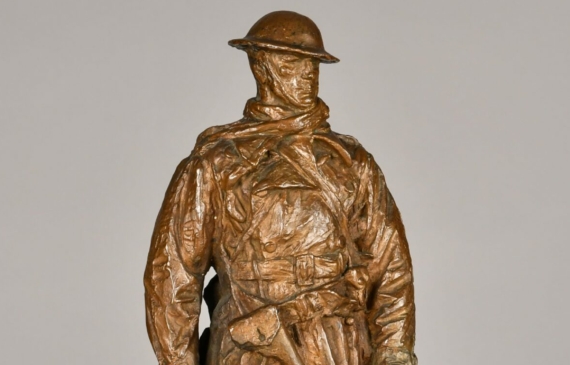
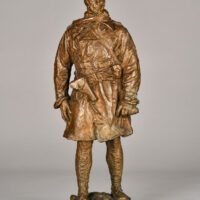
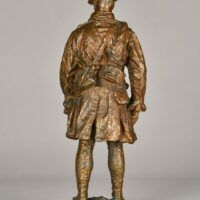
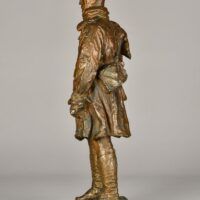
James Earle Fraser (American, 1876-1953)
Canadian Officer, 1921
Bronze, brown patina
16 ⅝ H. x 6 ⅛ W. x 4 ½ D. inches
Signed at left vertical edge of base:
Fraser © 1921
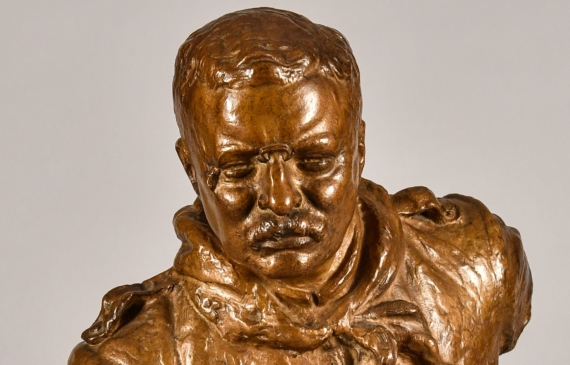
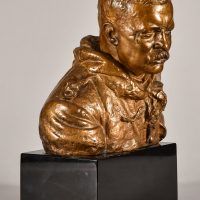
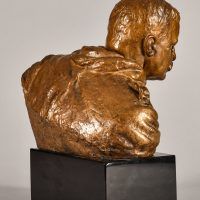
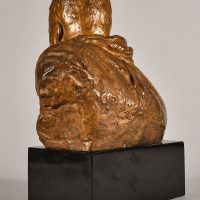
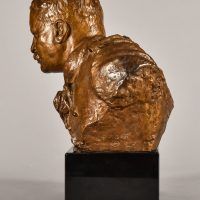
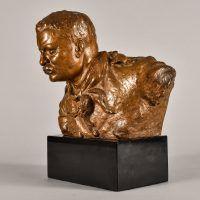
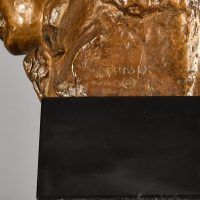
James Earle Fraser (American, 1876-1953)
Bust of Teddy Roosevelt as a Roughrider, 1910
Bronze, brown patina
9 ½ H. x 10 ½ W. x 8 D. inches
Signed: FRASER
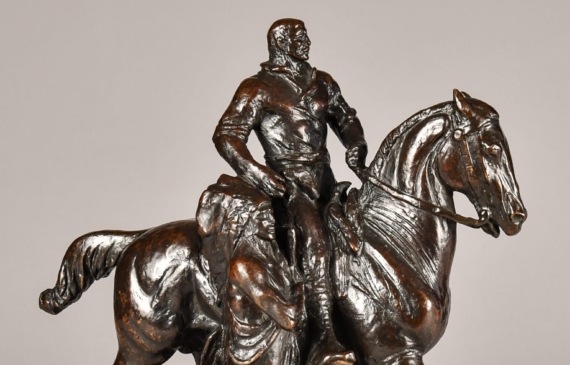
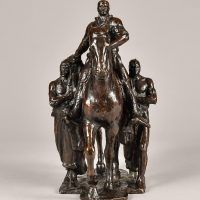
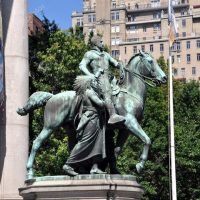
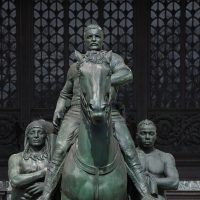
James Earle Fraser (American, 1876-1953)
Study of Theodore Roosevelt Monument at the American Museum of Natural History
Bronze, brown patina
12 ¼ H. x 6 W. x 12 ¼ D. inches
Signed on Base: J. E. F. R ©
Modeled 1939
Having spent his childhood in the West, James Earl Fraser became one of the most famous sculptors of cowboys, Indians, and horses. Fraser attended public school in Minneapolis, but lived much of the time in a railway car crossing through the Dakotas as his father was in charge of laying railroad track across the western plains. At the age of 18, with obvious artistic talent, Fraser began to study at the Art Institute of Chicago where he studied sculpture with Richard Bock. Later, at the age of 20, he went to Paris in order to study at the Ecole des Beaux-Arts and the Julian and Colarossi Academies.
At age 22, Fraser became an assistant in New York City to Augustus Saint-Gaudens before opening his own studio in New York. His first important commission was a bust of Theodore Roosevelt, which he completed in 1908. In 1913, Fraser designed the U.S. “Buffalo Nickel,” using three different Indians to capture the final single portrait. The bison on the reverse side was modeled after a bison named Black Diamond who lived at the New York Zoo. Two years after finishing the “Buffalo Nickel”, Fraser completed his most memorable work, The End of the Trail, depicting a dejected Indian sitting on his horse. Cast at Roman Bronze Works, this piece was originally modeled in 1894 and symbolizes the fate of the American Indians. The Seneca Chief John Big Tree was the model for the figure. A small version of the work was exhibited at the Paris Salon of 1898 where it won the American Artists Association John Wanamaker Prize. The 18-foot sculpture was exhibited at the Panama-Pacific Exposition in San Francisco in 1915 and the original 18-foot plaster version was acquired in 1968 and restored by the National Cowboy Hall of Fame in Oklahoma City.
Fraser was married to Laura Gardin, also an accomplished sculptor.